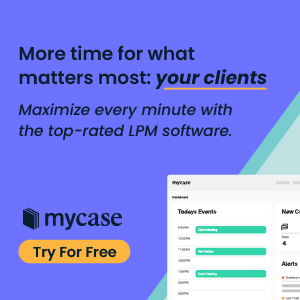As law firm leaders, our challenges extend beyond identifying capable potential employees; we must also ensure the seamless and comprehensive transfer of knowledge when new talent joins the firm. Leveraging technology creatively and strategically can be a powerful tool in building a culture of learning, creating longevity in existing employees, and in smoothing the on-ramp for those who come next.
Here’s how you can start leveraging your technological assets right now:
- Maximize the capabilities of your existing software. The legal technology landscape has undergone dramatic changes in the past five years, fueled by an influx of venture capital money, a surge in mergers and acquisitions, the rapid integration of generative AI functionality in existing software, and a wave of new technologies promising to be exactly what your firm needs to solve problems you didn’t know you had. While the rapidly shifting market makes the evaluation of new products a daunting task bordering on a full-time job, the benefit to consumers is many existing platforms are enhancing and expanding features to remain competitive. This makes it the ideal time to reassess your current software platforms to fully exploit their capabilities to optimize efficiency. For instance, if you purchased new practice management software three years ago, chances are you haven’t revisited its workflow or automation capabilities. Similarly, your five-year-old document management system may now offer real-time document collaboration, which may not have been available when originally implemented. Finally, you may be able to capitalize on an acquisition and investigate a new product that is being offered by your existing provider. New bundles available may mean you can add new technologies with a reduced initial investment.
- Think outside the legal tech toolbox. Walk through any ALA Expo Hall and you’ll encounter a plethora of business partners ready to solve common law firm problems. But, outside of legal technology, there’s a vast array of general business software that, while used globally, is often overlooked and underutilized by law firms. Tools like Asana, Trello and Slack offer robust options for managing tasks and streamlining workflows. They also provide employees with the tools to manage and organize their processes, and they offer the ability to build templates and structure so future team members aren’t reinventing the proverbial wheel. Other programs such as Notion expand on project management tools and give users the ability to collaborate on files while getting the added benefits of an AI assistant, built-in wikis, stored procedures and customizable templates. Another option in the interest of streamlining knowledge transfer between employees is to utilize screen capture software for current employees to record their daily processes. Programs such as Loom, Vimeo or even the native Windows application are user-friendly and existing employees can quickly teach skills — just by doing.
“Leveraging technology creatively and strategically can be a powerful tool in building a culture of learning, creating longevity in existing employees, and in smoothing the on-ramp for those who come next.”
- Invest in a knowledge management system. Investing in a knowledge management system (KMS) offers distinct advantages beyond the capabilities of traditional document, case or practice management software. Unlike document management systems (DMS) — designed to house your client’s documents — or case management software that is client-centric and targets the needs of an individual matter — or practice management software that is firm-centric and aims to optimize the efficiency and financial performance of the firm — a knowledge management system is, quite simply, designed to transfer knowledge among employees. Essentially, a KMS allows attorneys and staff to utilize the firm’s collective knowledge to better achieve tasks. Outside of law firms, companies use knowledge management systems to manage their FAQ content, and to house how to articles, tutorials, case studies and webinars. While a KMS encompasses features found in a standard DMS — such as a centralized document repository and document management and version control — it goes further to incorporate knowledge sharing, legal research, training and development, and possibly client collaboration.
- Utilize a third-party to develop customized, inclusive training. Given the pervasive high turnover rates across industries, law firms are grappling with significant challenges when it comes to software adoption and effective technology use among new hires. This has created an urgent need for specialized technology training integrated within a formal talent development framework. Many small to midsize firms likely do not have the resources for a dedicated full-time trainer to develop and deliver tailored and personalized training sessions.
However, customized, intentional and inclusive training is still possible through partnerships with training and consulting firms that focus on legal education such as Affinity Consulting Group or Traveling Coaches. Affinity’s Affinity Insight or Traveling Coaches’ Premier Learning go beyond content management by providing trainers who play a critical role in ensuring your programs cater to diverse learning preferences and incorporate various teaching modalities. This concierge level of care can be affordable for firms of all sizes. By equipping your team with tools and educational resources that bolster their skills, knowledge and expertise, you not only create a more engaged workplace but also accelerate professional growth and development.
Your firm’s strategic focus on succession planning can be bolstered by a purposeful focus on embracing the advanced features and capabilities of current legal AND nonlegal technologies. By effectively managing and transferring knowledge and doubling down on your commitment to best-in-class training, legal managers can ensure both new and existing team members are well-equipped to contribute to the firm’s success.

